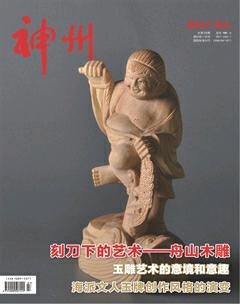浅析英语中的主谓一致原则
谭前辉
英语中,主语与谓语之间要求在人称和数上保持一致。处理主谓一致问题一般遵循以下三条原则:
一、语法一致原则:即主语人称和数的变化决定谓语动词的变化形式。
1.一般来说,主语是单数,其谓语用单数形式;主语是复数,其谓语也用复数形式。
e.g.①Im a student.②The boys are playing basketball.
2.主语是一个不可数名词,不定式(短语)或动名词(短语)时,其谓语应用单数形式。
e.g.①Snow is white.②To see(seeing) is to believe(believing).
3.主语是不定代词“each, one, much,(a)little, either, neither, another, the other+单数名词”时,谓语应用单数。
e.g.Each has a cup of tea.
4.主语是“each (either, neither, another, the other, one +of+复数名词(代词)”时,谓语常用单数。
e.g.①Each of us has a new book.②One of the girls likes dancing very much.
5.主语是由“every, some, any, no等构成的复合不定代词”时,其谓语用单数形式。
e.g.①Is everyone here? ②Someone is waiting for you.
6.主语是“both(of),(a) few (of), many, several, a number of等加名词”时,谓语应用复数形式。
e.g.①Both of them are workers.②Few of the girls are from Changsha.
7.单数主语后面跟有“with, together, with, along with, as well as, no less than, more than, rather than, as much as, like, except, besides, but等引导的词组” 时,其谓语也用复数形式。
e.g.①Tom, along with his classmates plays basketball every Sunday.②All but one do well in the exam.
8.由“many a, more than one等修飾单数名词作主语”时,谓语动词用单数形式;若“more than +复数名词作主语”时,谓语动词用复数形式。
e.g.①Many a comrade has given his life for the people.②More than two students have read the book.
9.主语是“one or two+复数名词”时,其谓语动词应用复数形式。
e.g.①One or two students havent come.②There are one or two things I want to tell you.
10.由“and或both… and连接两个单数形式的名词(代词)词组作主语”时,谓语动词一般用复数形式。
e.g.①A boy and a girl want to go.②Both rice and wheat are grown in that country.
二、意义一致原则
从意义着眼处理一致的关系,即主语形式虽为复数,但意义为单数,则谓语动词用单数形式;或主语形式为单数,意义为复数,则谓语动词用复数形式。
1.以ics或s结尾的学科名词,某些疾病,游戏名称,某些地理名词和其他专有名词,以及不可数名词“news”等作主语时,谓语一般用单数形式。
E.g.①Economics is a vital subject.② News is travelling very fast.
2.主语是单复数同形(sheep, dear, fish)词,谓语要根据句意决定其单数或复数形式。
e.g.① The(This, That) sheep is white.②The(These, Those) sheep are eating grass.
3.主语是“表时间、距离、重量、价值等的名词”时,形式虽为复数,但作“一个整体”看待,其谓语常用单数形式。
e.g.①There is only ten minutes left.②Five pounds is quite enough.
4.主语是“trousers,shoes,glasses,clothes”等时,谓语用复数形式。若其前有单位词(a/ this/ that/ king/pair+of...),则由单位词的单、复数来决定谓语的单、复数形式。
e.g.①My trousers are worn out.②This pair of shoes is new.
5.主语是“all(some, half, a lot ,plenty ,any, the rest/last/remainder, most, percent...)+of+名词”时,若of后是可数名词,谓语用复数形式,若是不可数名词,谓语用单数形式。
e.g.①All of books are interesting.②All of the work has been done.endprint
6.主语是集体名词,如family,class,team,group,crowd等时,谓语要依句意来定。若名词强调的是整体,谓語用单数;若名词强调的是该集体的各个成员,谓语则用复数形式。
e.g.①Class tow is a gooel class(视为集体)②Class tow are all out on the playground.
7.主语是某些形容词,如∶old , young, poor, rich, dead, living, blind, English(英国人),Chinese(中国人)等与the连用表示一类人或在姓氏的名词复数前加the时,谓语应用复数。
e.g.①The young have outdone the old.②The Toms' have gone to BeiJing.
8.主语是数词,谓语用单数;主语是个算式,谓语通常也用单数。
e.g.Tow and three is five.
9.由and连接的两个名词作主语时,若两个名词指“同一个人,同一物,同一事或同一概念且and后面的名词前无冠词”时,其谓语动词用单数形式。
e.g.①The teacher and writer has come.②All work and no play maks jack a dull boy.
10.由and连接的两个复数单词作主语时,若在各自前都有every,each,no,each...and...each...,every...and...every...等修饰时,谓语动词用单数形式。
e.g.①In china every boy and every girl has the right to go to school.②No teacher and no students has arrived.
三、临近一致原则∶即谓语动词的单复数形式要根据最靠近它的主语来决定。
1.在倒装句以及There be...结构中,如主语是并列的,谓语动词一般和其后面的第一主语取得数上的一致。
e.g.①Here comes a bus.②There are two pencils and a knife on the desk.
2.由“or,either,...or,neither...nor,not only...but(also),not...but”等连接的并列主语,谓语常与最临近的相一致。
e.g.①Neither you nor he is good at speaking English.②Not only students but also their theacher has gone to the English evening.
参考文献∶
[1]《实用英语语法》(张道真主编)
[2]《新编英语语法》(章振邦主编)
[3]《中专英语教材》(廖世翘主编)endprint

